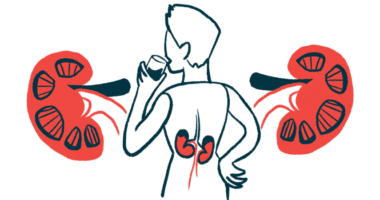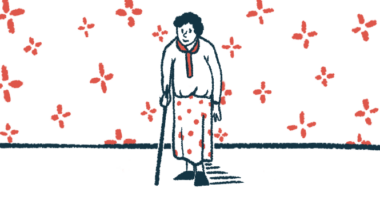Rituximab treatment can boost survival, slash AAV relapse rate
Japan real-world study also shows zero infection deaths from the therapy

In severe ANCA-associated vasculitis (AAV), rituximab may be superior to cyclophosphamide at helping people survive beyond 10 years and achieve remission, while reducing the need for standard corticosteroids.
These are the findings of a Japanese real-world study that also found rituximab was not associated with any infection-related deaths, unlike cyclophosphamide.
The findings align with the latest recommendations from the British Society for Rheumatology, which favor rituximab over intravenous (into-the-vein) cyclophosphamide for treating relapsing AAV, which is when a previously controlled disease flares up.
The study, “Long-term efficacy of rituximab versus intravenous cyclophosphamide for severe ANCA-associated vasculitis in multicenter REVEAL cohort study,” was published in the Journal of Internal Medicine by researchers in Japan.
Understanding AAV and remission goals
AAV causes inflammation in small blood vessels and can affect any part of the body, although organs like the kidneys and lungs are most commonly involved. AAV treatment aims to bring the disease into remission, where there are no symptoms, but optimal treatment for severe AAV remains unclear.
The first step in inducing remission is usually treatment with high-dose corticosteroids combined with either rituximab or cyclophosphamide, both given intravenously. Because corticosteroids can cause serious side effects when used at high doses or for prolonged periods, they should be tapered over time.
However, “whether [rituximab] is more effective than [intravenous cyclophosphamide] in patients with severe AAV in a long-term real-world setting remains unknown,” the researchers wrote. To find answers, researchers in Japan analyzed data from the observational, multicenter REVEAL registry, which follows people with AAV in Japan.
The researchers retrospectively analyzed data from 178 people with AAV, median age 74, who received induction treatment with corticosteroids combined with either rituximab (45 people) or cyclophosphamide (133 people).
Most (80.9%) had microscopic polyangiitis (MPA), while 19.1% had granulomatosis with polyangiitis (GPA), the two AAV types for which rituximab is approved.
The team used a statistical method to adjust for potential influencing factors and make people in the rituximab and cyclophosphamide groups as comparable as possible in several demographic and clinical features.
Rituximab delivers strong long-term results
Results showed the proportion of people who died was significantly lower among those treated with rituximab compared with those on cyclophosphamide (2.3% vs. 31.2%). Rituximab was linked to a significantly better 10-year survival, with patients being 90% less likely to die relative to those on cyclophosphamide.
At six months, corticosteroid-free remission was significantly more frequent in the rituximab group (52.1% vs. 30.9%). Corticosteroid-free remission was defined as a Birmingham Vasculitis Activity Score (BVAS) of zero, indicating no disease activity, on two visits at least one month apart, and a low daily dose of prednisolone, a corticosteroid.
People on rituximab required lower doses of prednisolone than those on cyclophosphamide at three, six, and 12 months. The BVAS showed a significant drop after treatment, indicating less severe disease, in both groups.
“In the [rituximab] group, [prednisolone] could be tapered earlier than that in the [intravenous cyclophosphamide] group without exacerbating the disease,” the researchers wrote. This means that while both therapies are effective at lessening disease severity, rituximab may reduce the need for corticosteroids more effectively.
Relapses were significantly less common in the rituximab group than in the cyclophosphamide group (17.8% vs. 44.9%). The 10-year relapse also tended to be lower among people treated with rituximab, but the difference was not statistically significant. In both groups, about half of people were on maintenance treatment with immunosuppressants at the time of their relapse.
Rituximab-treated patients tended to have lower rates of kidney failure progression relative to those on cyclophosphamide (6.9% vs. 10.4%), but 10-year progression rates “were comparable between the two groups,” the researchers wrote.
The team then analyzed the proportion of infection-related deaths and hospitalizations, given that both rituximab and cyclophosphamide suppress the immune system and can increase the risk of infections.
They found no deaths from severe infection among people treated with rituximab, while these occurred in 15.2% of those on cyclophosphamide. Severe infections, mostly respiratory, developed a median of two years after starting cyclophosphamide. Infection-related hospitalizations were more frequent with cyclophosphamide (30.7% vs. 16.1%), but the difference was not statistically significant.
“[Rituximab] demonstrated superior efficacy in improving survival and achieving [corticosteroid-free] remission, with fewer infection-related deaths compared to [intravenous cyclophosphamide] in patients with severe AAV,” the researchers concluded.







